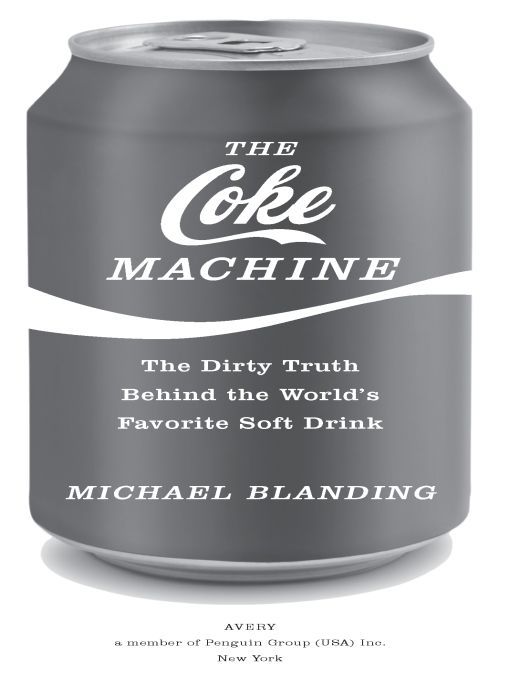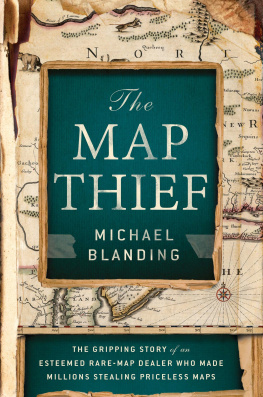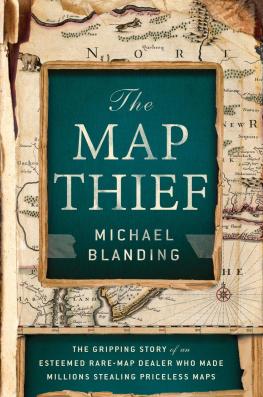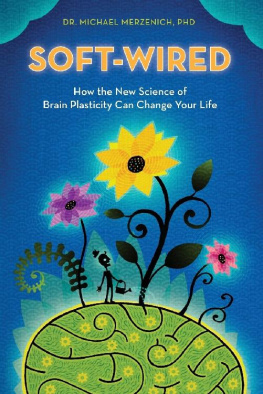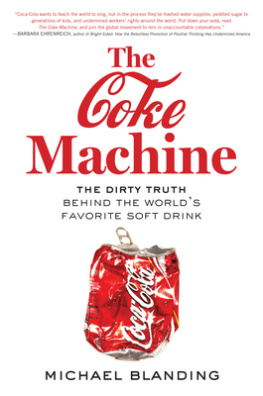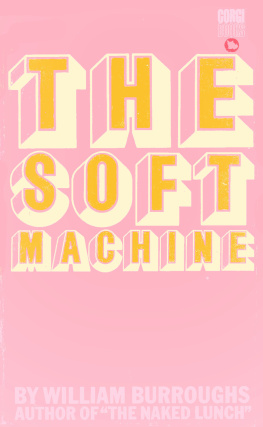Table of Contents
For Alexfor everything
Introduction
The Coca-Cola bottling plant in Carepa, Colombia, is an unlovely pile of brick on the outskirts of a sweltering Caribbean backwater. It sits past sad dogs blinking away flies on dirty streets, men loading yuccas and plantains into peddle carts, and gaudy open-roof chivas spewing diesel fumes as they idle by the roadside. Surrounding it, fields stretch to the horizon, studded with lonely palm and banana trees. The only consolation is a roadside Madonna on the edge of the gravel parking lot, a solitary benediction to bless the way of those leaving town.
On the morning of December 5, 1996, two men pulled a motorbike into the gravel driveway. They circled the parking lot a few times before coming to a stop in front of the gate. Inside the battered chain-link fence was a courtyard piled with soda crates waiting to be loaded onto delivery trucks. On either side was a wall of heavy pink brick, painted with the Coke logo. And to the right, a small gatehouse set into the wall looked through metal slats at the parking lot.
The motorcycles passenger dismounted, while the driver sat with the engine idling. Walking up to the fence, he addressed the gatekeeper, a thin man with light brown skin, coffee-colored eyes, a mustache, and heavy eyebrows. That matched the description the visitor had been given, but he had to be sure.
Are you Isidro Gil? he asked.
Inside, the man hesitated slightly before replying. Yeah. But why do you want to know?
We need to go inside and see a client.
Wait a minute, replied Gil, who just then saw a delivery truck rumbling up from the yard. Let me deal with this truck first, and then Ill help you out.
With nothing to do but his job, Gil unlocked the gate and pulled the chain-link fence toward either side to allow the truck to pass. Perhaps he suspected the danger he was in and simply resigned himself to his fate. More likely he somehow thought he would be spared from any potential violence by his position in the hierarchy of the bottlers union, by promises the plant management had given ensuring his safety, by the fact that it was nine in the morning in a public location with plenty of people milling around the plant.
In fact, this was not the first strange motorcycle that he had seen this morning. A half-hour earlier, another had pulled up to the small kiosk by the side of the road that served Coke to workers before and after their shifts. Gil had watched one of his coworkers point him out, and the cyclist nod before driving off. Gil was still worrying about the incident when the second motorcycle appeared.
In Colombia, a motorcycle isnt just a motorcycle. Its also the transport of choice for the paramilitary death squads that target guerrillas and anyone remotely associated with them on the other side of the countrys smoldering thirty-five-year-old civil war. In Medelln at the time, men were forbidden from carrying another man as a passenger, since it was so common for one to drive while the other pulled a trigger.
But Gil wasnt the kind of person to back down from confrontation. Among his coworkers, the twenty-eight-year-old was a natural leader. Gregarious and charismatic, hed organize fishing trips to the river and soccer and baseball tournaments on the weekends. He started out on the production line, but was reassigned to his current job at the front gate in 1994, just around the same time the paramilitaries started ominously appearing in the region.
Ostensibly, the death squads targeted the guerrillas who used the Caribbean location to import guns from Panama or tax drug shipments heading farther north. But the guerrillas were difficult targets, hiding in camps buried deep in the jungles. So soon the death squads turned their attentions to the civilians whom they suspected of supporting the guerrillasa long list, including left-wing politicians, academics, health and human rights workers, teachers, and trade unionists.
The union at the Coke plant, SINALTRAINAL, was a natural target. Two of its leaders had already been killed by the time Isidro Gil was named secretary-general and put in charge of renegotiating the workers contract with the bottling company. On November 18, 1996, the union submitted its final proposal for a new contract, demanding increased pay and benefits, along with protection from firing and new security measures to keep union leadership safe from violence.
The Coke plants local managers and its Florida-based owners had until December 5 to respond to the collective bargaining proposal. As he stood at the gate that morning, Gil was mentally preparing for the meeting that day, not knowing it would never take place. As he opened the gate to let out the delivery truck, he stepped back behind the gatehouse. The truck rumbled past, its bright red Coke logo shining in the morning light. Before Gil could push the metal frame closed, the visitor walked right through the gate behind it. Pulling out a .38 Special, he raised it to Gils face and shot him between the eyes.
On the face of it, this was just one more casualty in a Third World countrys long and bloody civil war, a war that has claimed tens of thousands of livesincluding more than 2,500 union members in the last twenty years. For the national leaders of SINALTRAINAL, however, this was something more: part of a coordinated campaign to stamp out union activism at the bottling plant, orchestrated by the bottler and the Coca-Cola Company itself. Before it was over, eight union leaders would be killed in Carepa and the union driven to extinction. At best, they charged, Coke stood by and let it happen. At worst, they said, company managers directed the violence through regular coordinated meetings with paramilitaries inside the plant.
Its a shocking allegation to level at the company that has presented through its advertising one of the most compelling visions of international peace and harmony the world has ever seen. And yet its not the only charge that has been leveled in recent years against the Coca-Cola Company, which stands accused of decimating water supplies of villagers in India and Mexico, busting up unions in Turkey and Guatemala, making kids fat throughout the United States and Europe, and hoodwinking consumers into swallowing glorified tap water marketed under its bottled water brand Dasani.
Perhaps its not too much of a surprise to find the Coca-Cola Company on the stand for these injustices. In this era of cynicism, its standard practice to believe corporations from Halliburton to ExxonMobil capable of every form of evil, trained by the profit drive of capitalism to turn a blind eye to the worst consequences of their actions. The Coca-Cola Company, however, represents a special caseat once the quintessential example of a giant American multinational corporation and a beloved pop culture symbol that has spent billions of dollars to present an image of wholesomeness and harmony that has made it cherished by millions of people around the world. Finding the Coca-Cola Company accused of murder is like finding out Santa Claus is accused of being a pedophile.
So how is it that a company that, in its own words, exists to refresh and benefit everyone it touches now stands accused of drought, disease, exploitation, and murder? To truly understand that contradiction, its necessary to go back to Coca-Colas origins as a cocaine-laced nerve tonic in the turn-of-the-century American South. Its there that the seeds of its inexorable drive to growth were planted, along with the decisions that have allowed it to disavow responsibility for its bottlers around the globe. Thats the essence of Coca-Colawhat one of its legendary executives once called the essence of capitalism.

